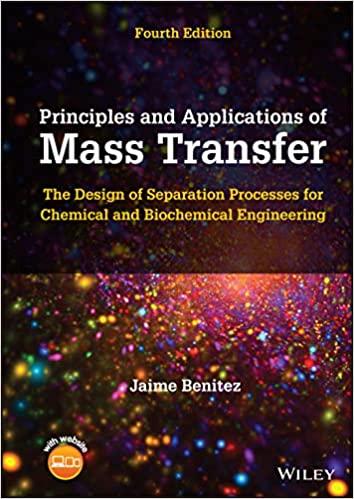If the aqueous solution of Example 9.10 also contained (2 mathrm{~g} / mathrm{cm}^{3}) of sucrose ( (K_{c}
Question:
If the aqueous solution of Example 9.10 also contained \(2 \mathrm{~g} / \mathrm{cm}^{3}\) of sucrose ( \(K_{c} a=0.0429 \mathrm{~s}^{-1}, \kappa=0.9 \mathrm{~cm}^{3} / \mathrm{g}\) ), generate the corresponding chromatogram, including the three peaks.
Data From Example 9.10:-
An aqueous solution containing 2 g/cm3 each of glucose and fructose is to be separated in a chromatographic column packed with a special resin. In the range of expected solute concentrations, the sorption isotherms are lineal and independent with qi = κici. The superficial velocity is 0.05 cm/s, the bed porosity is 39%, and the bulk density of the bed is 0.5 g/cm3. The length of the bed is 2.0 m; the duration of the feed pulse is 500 s followed by elution with pure water. Generate the chromatogram (plot of solute exit concentrations in the elutant as a function of time) for these conditions. Does a significant overlap of the peaks result? The following data apply:

Step by Step Answer:





